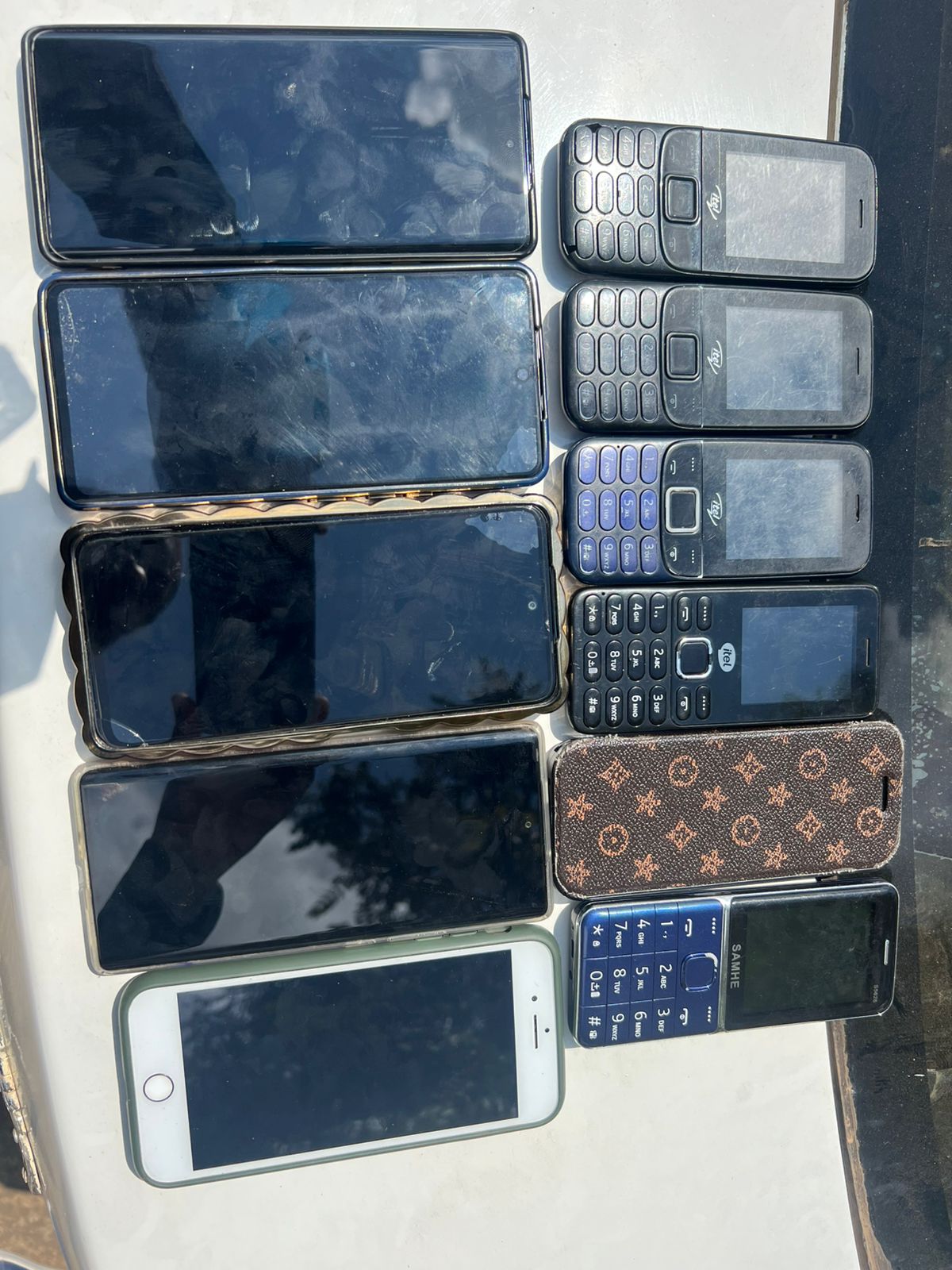 Assorted mobile phones recovered from the suspects. /DCI/X
Assorted mobile phones recovered from the suspects. /DCI/XDCI detectives drawn from the Crime Research and Intelligence Bureau jointly with the Operation Action Team have rounded up five suspects linked to mobile money fraud across the country.
The arrest followed numerous complaints reported by mobile money shop attendants whose floats have been swept clean through fraudulent tricks, DCI Director Mohamed Amin said in a statement.
He said the intelligence-led dragnet led to the apprehension of one suspect who is a resident of Munyaka in Eldoret, one from Kitale's Tiwani area, another from Hawaii in Eldoret and a lady suspect from Eldoret's Kimumu area.
Amin said the fifth suspect who was arrested in the ongoing operation is a resident of Kibosi in Kisumu.
"The Premio in which they were driving was also intercepted and detained, wherein several SIM cards registered under different names and assorted mobile phones were also recovered," the top sleuth revealed.
He said detectives have embarked on taking the suspects round all police stations where mobile money fraud has been reported as part of intensified investigations into the suspects' activities.
He said the first stop was Ruai police station, where one of the reports was filed.
Fraud targeting mobile money agents in Kenya is a persistent and evolving issue.
Fraudsters exploit technological loopholes, social engineering, and operational weaknesses to flawlessly empty agents' reserve cash best known as "float".
They use a mix of psychological manipulation, technological spoofing, and institutional impersonation to exploit mobile money agents.
The most common are:
Social Engineering
Fraudsters pose as customers with elaborate stories like emergencies.
Once they gain the trust of the agent, they ask them to bypass verification steps (because they forgot their ID) and end up conducting unauthorised or unverified transactions.
Impersonation of company officials
Fraudsters call agents claiming to be from the parent company.
They say they are "updating" the system or "verifying" the line.
The fraudster tricks the agent into revealing PINs, passwords, or approving USSD prompts.
The fraudster then gains unauthorised access to the agent's account and transfers funds to a different account, probably registered under fake details or using stolen identification documents.
Over-the-counter fraud (Float theft)
A fraudster posing as a customer or fellow agent engages in rapid or confusing transactions.
They may distract or confuse the agent during multiple deposits/withdrawals to cause accounting errors or mislead float balances.
At the end, agents are left with shortfalls in float or cash.
SIM Swap and Identity Fraud
Here, a fraudster obtains the agent’s SIM card details through social engineering or phishing.
Using this information, they request a SIM swap through the issuing company or collude with rogue insiders.
Once the swap is successful, the agent is locked out after losing sensitive data.
The fraudster then gains access to the agent’s account and steals funds.
Fake SMS confirmation messages
When using this method, a fraudster creates a message that looks like a genuine transaction confirmation.
They use sender IDs similar to ones sent by telcos to mimic authenticity.
The agent, thinking money has been deposited, releases cash or e-float, suffering financial losses when they later realise no funds were transferred.
Agents are advised to confirm transactions on their official till line or app — not via SMS alone.
Fake reversal requests
Fraudsters who employ this trick usually send money to an agent or customer and then call the service provider pretending the transaction was a mistake.
Sometimes, they pressure the agent to reverse the transaction directly before official confirmation.
If the agent fails to verify the legitimacy of the reversal, they end up sending cash or float back.
However, this trick is less effective since service providers now require that for a reversal to be approved, the agent or customer must authorise either through SMS prompt or phone call.

















